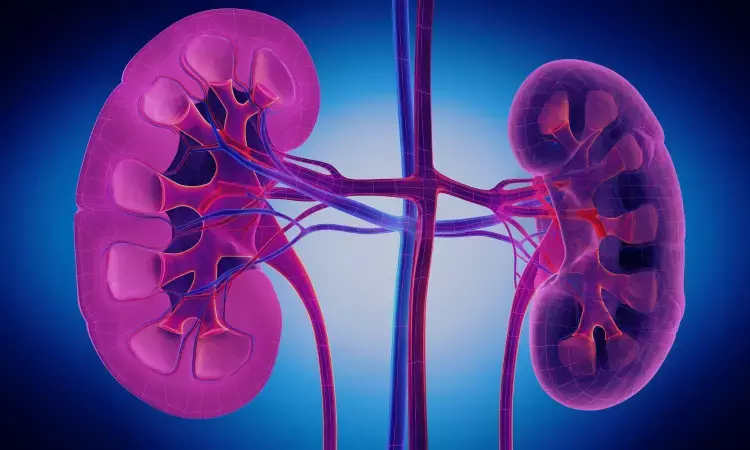- Home
- Medical news & Guidelines
- Anesthesiology
- Cardiology and CTVS
- Critical Care
- Dentistry
- Dermatology
- Diabetes and Endocrinology
- ENT
- Gastroenterology
- Medicine
- Nephrology
- Neurology
- Obstretics-Gynaecology
- Oncology
- Ophthalmology
- Orthopaedics
- Pediatrics-Neonatology
- Psychiatry
- Pulmonology
- Radiology
- Surgery
- Urology
- Laboratory Medicine
- Diet
- Nursing
- Paramedical
- Physiotherapy
- Health news
- Fact Check
- Bone Health Fact Check
- Brain Health Fact Check
- Cancer Related Fact Check
- Child Care Fact Check
- Dental and oral health fact check
- Diabetes and metabolic health fact check
- Diet and Nutrition Fact Check
- Eye and ENT Care Fact Check
- Fitness fact check
- Gut health fact check
- Heart health fact check
- Kidney health fact check
- Medical education fact check
- Men's health fact check
- Respiratory fact check
- Skin and hair care fact check
- Vaccine and Immunization fact check
- Women's health fact check
- AYUSH
- State News
- Andaman and Nicobar Islands
- Andhra Pradesh
- Arunachal Pradesh
- Assam
- Bihar
- Chandigarh
- Chattisgarh
- Dadra and Nagar Haveli
- Daman and Diu
- Delhi
- Goa
- Gujarat
- Haryana
- Himachal Pradesh
- Jammu & Kashmir
- Jharkhand
- Karnataka
- Kerala
- Ladakh
- Lakshadweep
- Madhya Pradesh
- Maharashtra
- Manipur
- Meghalaya
- Mizoram
- Nagaland
- Odisha
- Puducherry
- Punjab
- Rajasthan
- Sikkim
- Tamil Nadu
- Telangana
- Tripura
- Uttar Pradesh
- Uttrakhand
- West Bengal
- Medical Education
- Industry
Rare case of diabetic nephropathy with marked extra-capillary cell proliferation- A report

Japan: A recent case study published in BMC Nephrology describes the rare case of finding extra-capillary hypercellularity in a patient with diabetic nephropathy (DN).
"Extra-capillary hypercellularity, which resembles focal segmental glomerulosclerosis (FSGS) or crescentic glomerulonephritis (GN), is a rare finding in diabetic nephropathy and should therefore be treated with caution," suggested Madoka Morimoto, Sakai City Medical Center, Nishi-Ku, Sakai City, Osaka, Japan, and colleagues. "In such cases, the diagnosis of diabetic nephropathy may be facilitated by co-staining for claudin-1 and nephrin."
In developed countries, diabetic nephropathy is the most frequent cause of end-stage renal failure. Glomerular involvement in diabetic nephropathy initiates with the thickening of the basement membrane and advances to a diffuse increase in the nodular lesions and mesangial matrix. A kidney biopsy is rarely performed when the clinical presentation is consistent with DN and the diagnosis is made clinically. Biopsies are performed mainly when other renal complications are suspected.
Extra-capillary hypercellularity is a common discovery in crescentic GN and FSGS. In diabetic nephropathy, extra-capillary hypercellularity is frequently observed as a finding of complications such as microscopic polyangiitis or IgA nephropathy superimposed on DN. However, the researchers note that in rare cases, epithelial cell proliferation may accompany diabetic nephropathy. Dr. Morimoto and the team experienced a case of nodular diabetic glomerulosclerosis with marked extra-capillary hypercellularity and revealed the origin of this atypical lesion using immunostaining.
The case concerns a man in his 50s who was admitted to the hospital with a chief complaint of dyspnea and oedema of the lower legs. One year before hospitalization, the patient was diagnosed with type 2 diabetes mellitus (T2DM) and hypertension. The team performed a renal biopsy. Diffuse nodular lesions and extra-capillary hypercellularity were observed, but the results of serological examination or immunofluorescent assays did not reflect any other crescentic GN.
Immunostaining was performed for nephrin and claudin-1 to identify the origin of the extra-capillary lesions. Given the clinical course and pathological findings, diabetic nephropathy-associated extra-capillary cell proliferation was diagnosed. SGLT2 and RAS inhibitors were added after the diagnosis to treat diabetic nephropathy.
Ten months after the biopsy, the patient maintains an eGFR of 24.44 ml/min/1.73 m2 and urinary protein of 1.61 g/gCr, which indicates incomplete remission type II for nephrotic syndrome.
The study's limitations include the case being single. Also, the involvement of CD44-positive activated PECs and renal progenitor cells has been recently investigated in diseases involving extra-capillary cell proliferation; however, in the study, the participation of these cells was not examined.
"Although DN with extra-capillary hypercellularity is a rare condition, investigation of extra-capillary lesions using immunostainings may be meaningful," the authors concluded.
Reference:
Morimoto, M., Namba-Hamano, T., Notsu, S. et al. Diabetic nephropathy with marked extra-capillary cell proliferation: a case report. BMC Nephrol 24, 139 (2023). https://doi.org/10.1186/s12882-023-03204-3
Dr Kamal Kant Kohli-MBBS, DTCD- a chest specialist with more than 30 years of practice and a flair for writing clinical articles, Dr Kamal Kant Kohli joined Medical Dialogues as a Chief Editor of Medical News. Besides writing articles, as an editor, he proofreads and verifies all the medical content published on Medical Dialogues including those coming from journals, studies,medical conferences,guidelines etc. Email: drkohli@medicaldialogues.in. Contact no. 011-43720751


